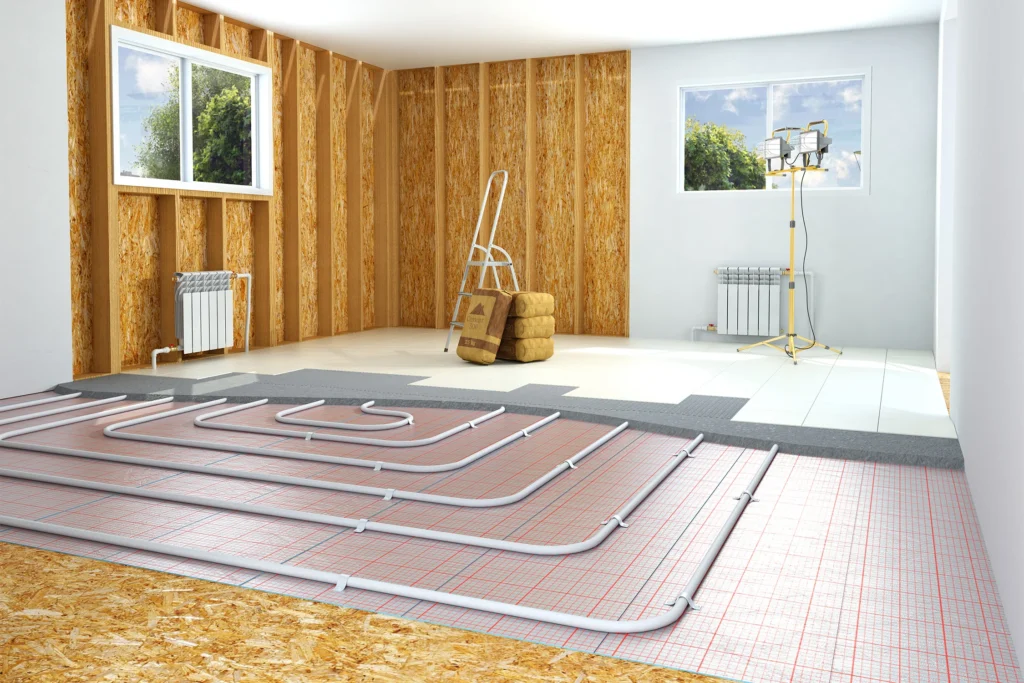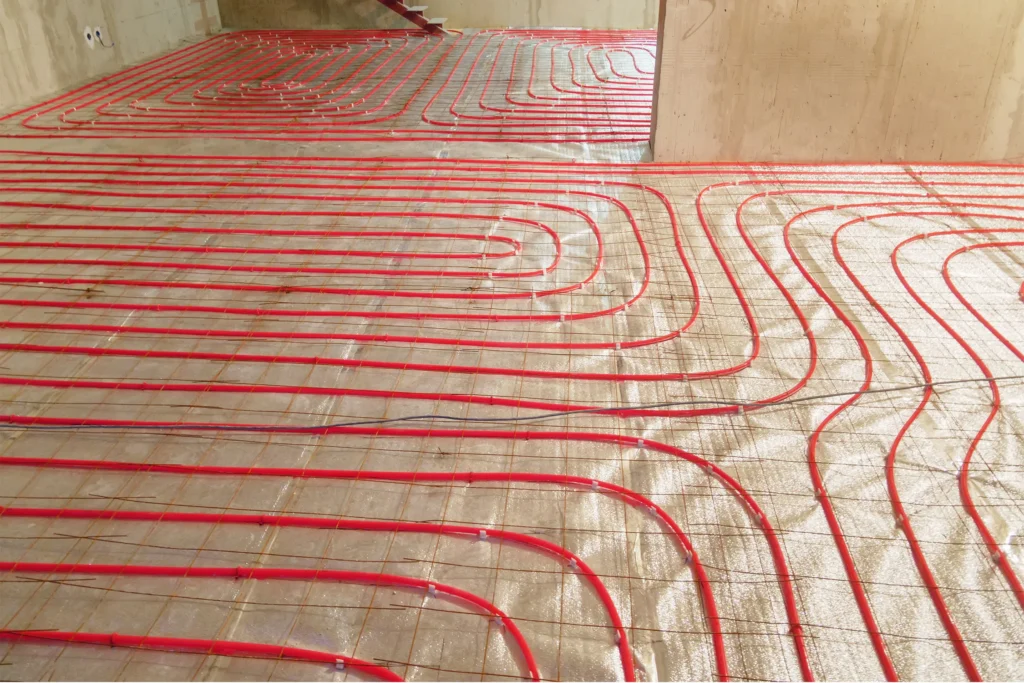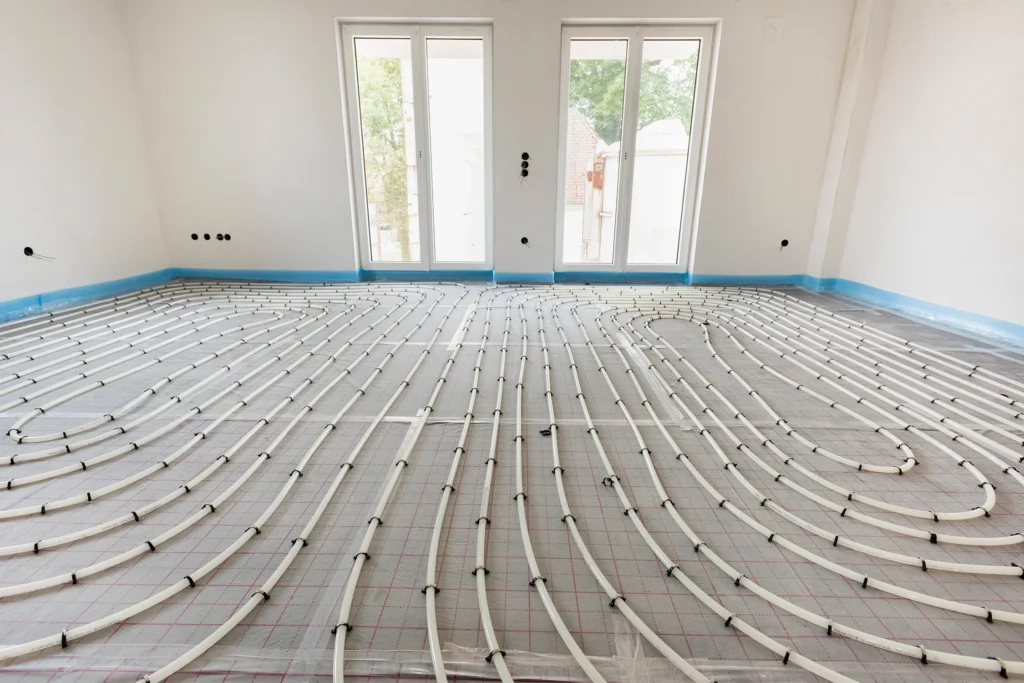Floor Heating
Floor heating systems, also known as radiant heating, provide a modern and energy-efficient way to heat indoor spaces. These systems work by circulating warm water through a network of tubing embedded beneath the floor, delivering even, consistent heat from the ground up.This method creates consistent, even heat distribution that enhances comfort while reducing energy waste.
What are Brazed Plate Heat Exchangers (BPHE)?
The Role of BPHEs in Floor Heating
In floor heating applications, BPHEs serve a crucial role by efficiently transferring heat between two separate fluid circuits. This typically involves a high-temperature boiler loop and a lower-temperature loop that circulates through the floor.
Importance of Efficient Heat Transfer in Floor Heating
Poorly designed loops or inefficient heat transfer can cause hot and cold spots, making floors uncomfortable and heating unreliable. Proper layout and quality components are key to even warmth.



Benefits of AlorairCoil’s Brazed Plate Heat Exchangers
AlorairCoil’s BPHEs are engineered with a fishbone corrugated pattern that increases turbulence and maximizes thermal transfer. This design enables rapid and even heat distribution across all zones, reducing warm-up time and ensuring consistent floor temperatures throughout the space. Its 99% heat transfer efficiency makes them ideal for high-performance thermal control.
AlorairCoil’s BPHEs are built with a slim, vertical form factor that allows for easy integration into tight spaces without sacrificing performance. Their compact design simplifies installation in industrial or commercial radiant heating setups, offering flexibility for both new builds and upgrades.
AlorairCoil’s BPHEs are constructed from SS316L stainless steel and vacuum-brazed with copper, ensuring reliable operation under pressure. Their robust build handles demanding conditions, making them suitable for both open and closed-loop floor heating applications
AlorairCoil’s BPHEs feature a fully brazed, gasket-free construction that eliminates common leak points and reduces the risk of fouling. This means less downtime and fewer repairs, making them a smart, dependable choice for radiant heating systems that need to run efficiently and reliably year-round.
How to Select the Right BPHE

Load Capacity
Calculate the amount of heat transfer needed to ensure that the heat exchanger is capable of handling the required thermal load and maintain system efficiency.

Operating Temperatures and Pressures
Choosing a BPHE with the appropriate tolerance ensures safe and efficient operation while preventing potential failures due to extreme conditions.

Fluid Type and Flow Rates
The type of fluid being processed the heat exchanger’s flow rate capacity affects the performance and longevity of the BPHE.

Material Compatibility
Material selection is vital to prevent corrosion and degradation, particularly with highly aggressive or specialized fluids that may require alternative configurations.

Available Space
Ensuring proper clearance for connections and maintenance access can prevent operational issues and facilitate easy integration into the HVAC system.
Conclusion
Brazed plate heat exchangers are an efficient and reliable solution for floor heating systems. They enhance thermal performance, ensure consistent comfort, and protect system components—all while reducing energy consumption and maintenance needs.
